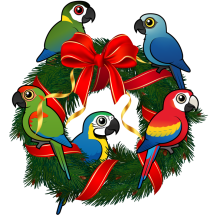The Red-fronted Macaw is a medium-sized parrot known for its distinctive and vibrant appearance. This macaw features a mostly olive-green body with bright red patches on its forehead, shoulders, and under the tail. The striking contrast is further enhanced with blue streaks on the wings and a tail that mixes blue and green hues.
Endemic to a small mountainous area in south-central Bolivia, the Red-fronted Macaw thrives in arid landscapes characterized by scrublands and cacti interspersed with patches of forest. This unique habitat, quite different from the rainforests typically associated with macaws, supports their specialized diet of fruits and seeds, particularly hard seeds from tough pods that other animals cannot open.
These birds are known for their sociable nature, often seen in small flocks, and have a playful demeanor which makes them quite endearing. Despite their engaging personality and resilience in harsh environments, the Red-fronted Macaw faces severe threats from habitat degradation and illegal capture for the pet trade. They are considered critically endangered, with conservation efforts being crucial to their survival.
アカミミコンゴウインコ (Akamimikongouinko)



































